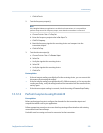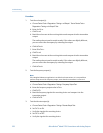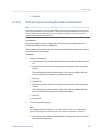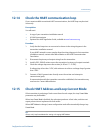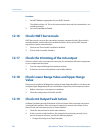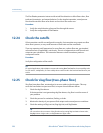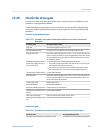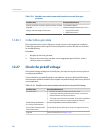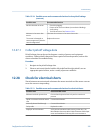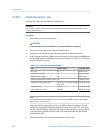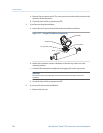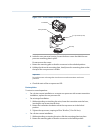
The Flow Direction parameter interacts with actual flow direction to affect flow values, flow
totals and inventories, and output behavior. For the simplest operation, actual process
flow should match the flow arrow that is on the side of the sensor case.
Procedure
1. Verify the actual direction of process flow through the sensor.
2. Verify the configuration of Flow Direction.
12.24 Check the cutoffs
If the transmitter cutoffs are configured incorrectly, the transmitter may report zero flow
when flow is present, or very small amounts of flow under no-flow conditions.
There are separate cutoff parameters for mass flow rate, volume flow rate, gas standard
volume flow rate (if applicable), and density. There is an independent cutoff for each mA
output on your transmitter. The interaction between cutoffs sometimes produces
unexpected results.
Procedure
Verify the configuration of the cutoffs.
Tip
For typical applications, Micro Motion recommends setting Mass Flow Cutoff to the zero stability value
for your sensor, multiplied by 10. Zero stabiliy values can be found in the Product Data Sheet for your
sensor.
12.25 Check for slug flow (two-phase flow)
Slug flow (two-phase flow, entrained gas) can cause spikes in the drive gain. This may
cause the transmitter to report zero flow, or to post several different alarms.
1.
Check for slug flow alarms.
If the transmitter is not generating slug flow alarms, slug flow is not the source of
your problem.
2. Check the process for cavitation, flashing, or leaks.
3. Monitor the density of your process fluid output under normal process conditions.
4. Check the settings of Slug Low Limit, Slug High Limit, and Slug Duration.
Tip
You can reduce the occurrence of slug flow alarms by setting Slug Low Limit to a lower value,
Slug High Limit to a higher value, or Slug Duration to a higher value.
Troubleshooting
238 Micro Motion
®
Model 2700 Transmitters with Analog Outputs




